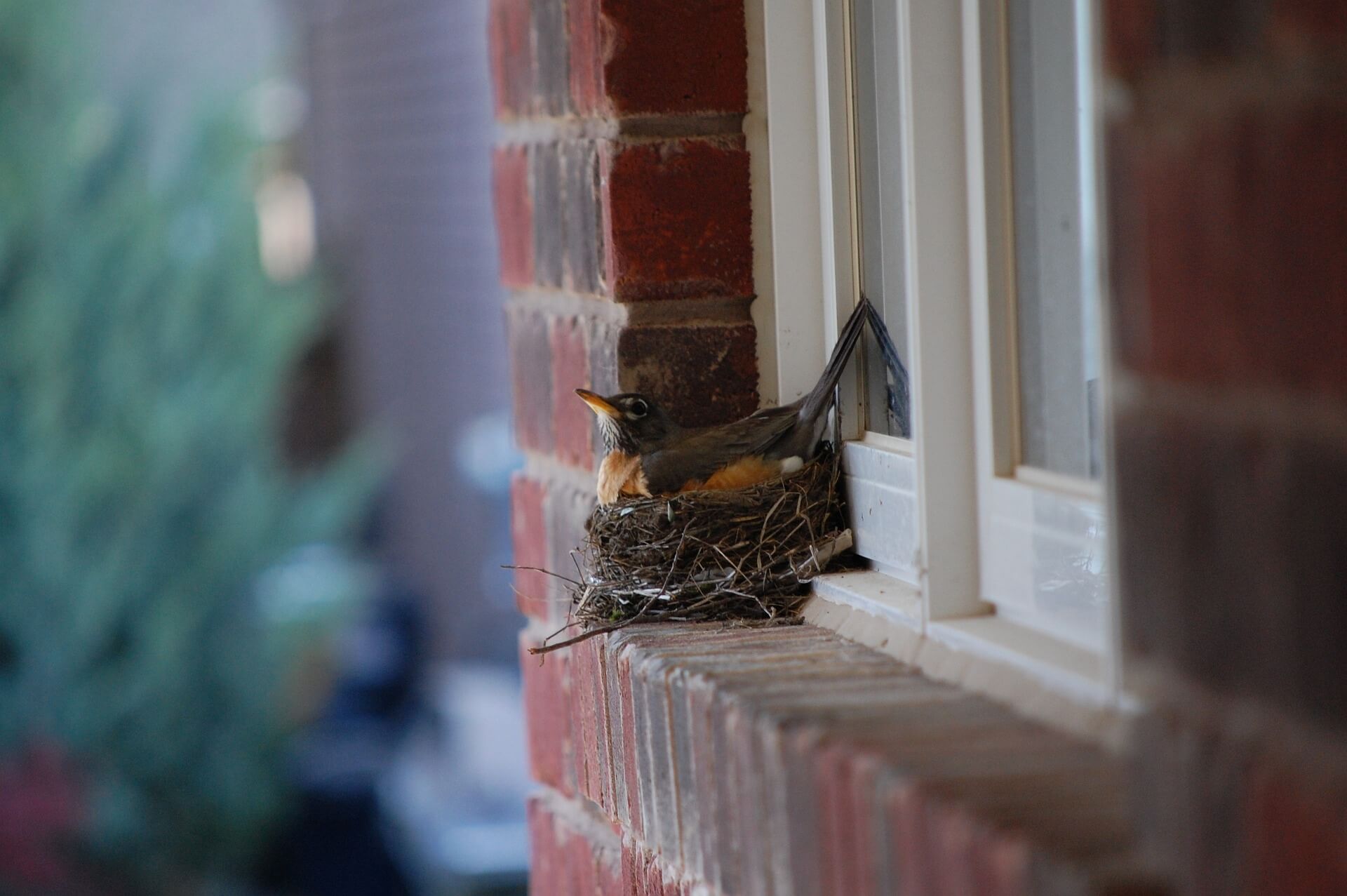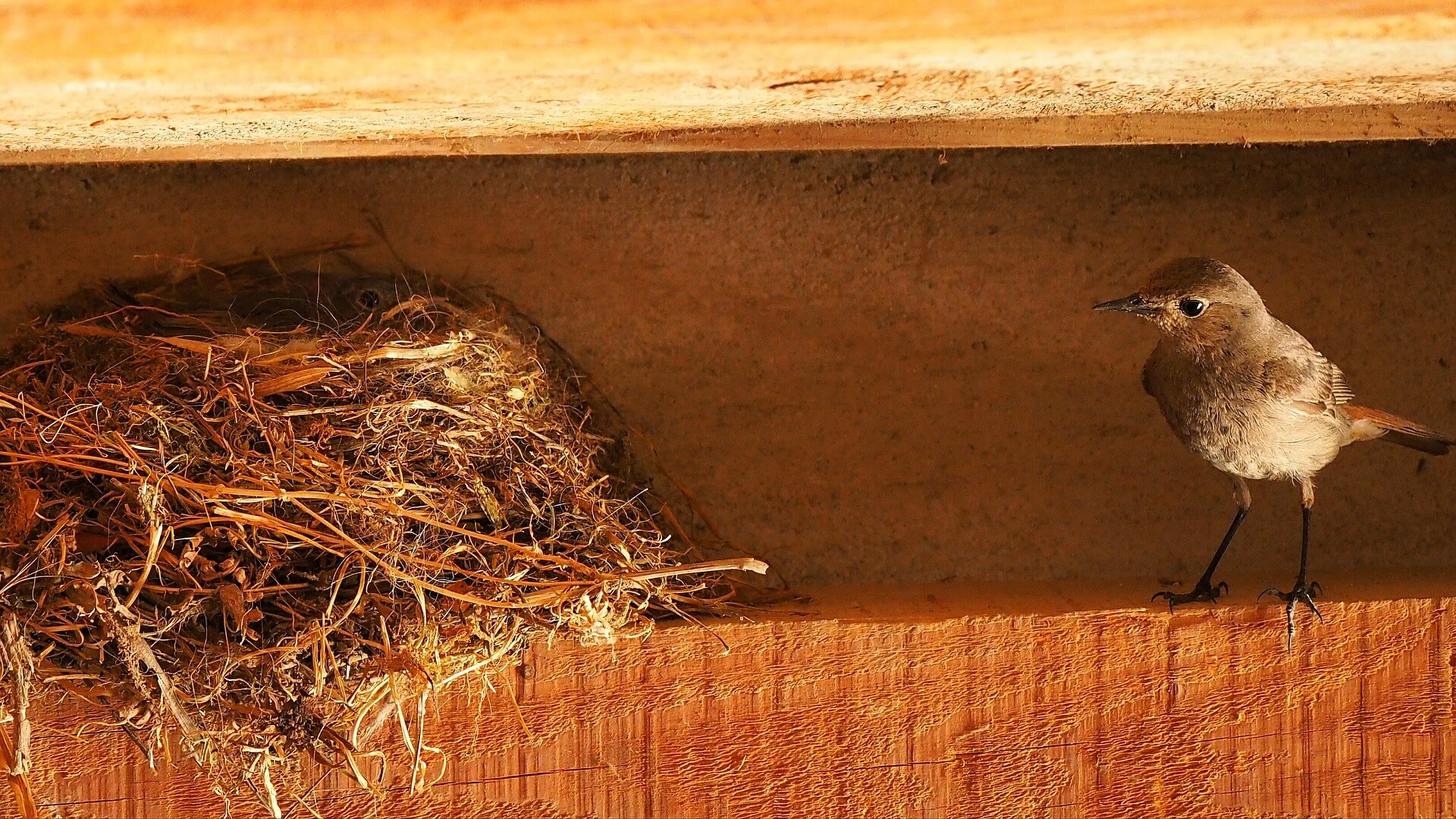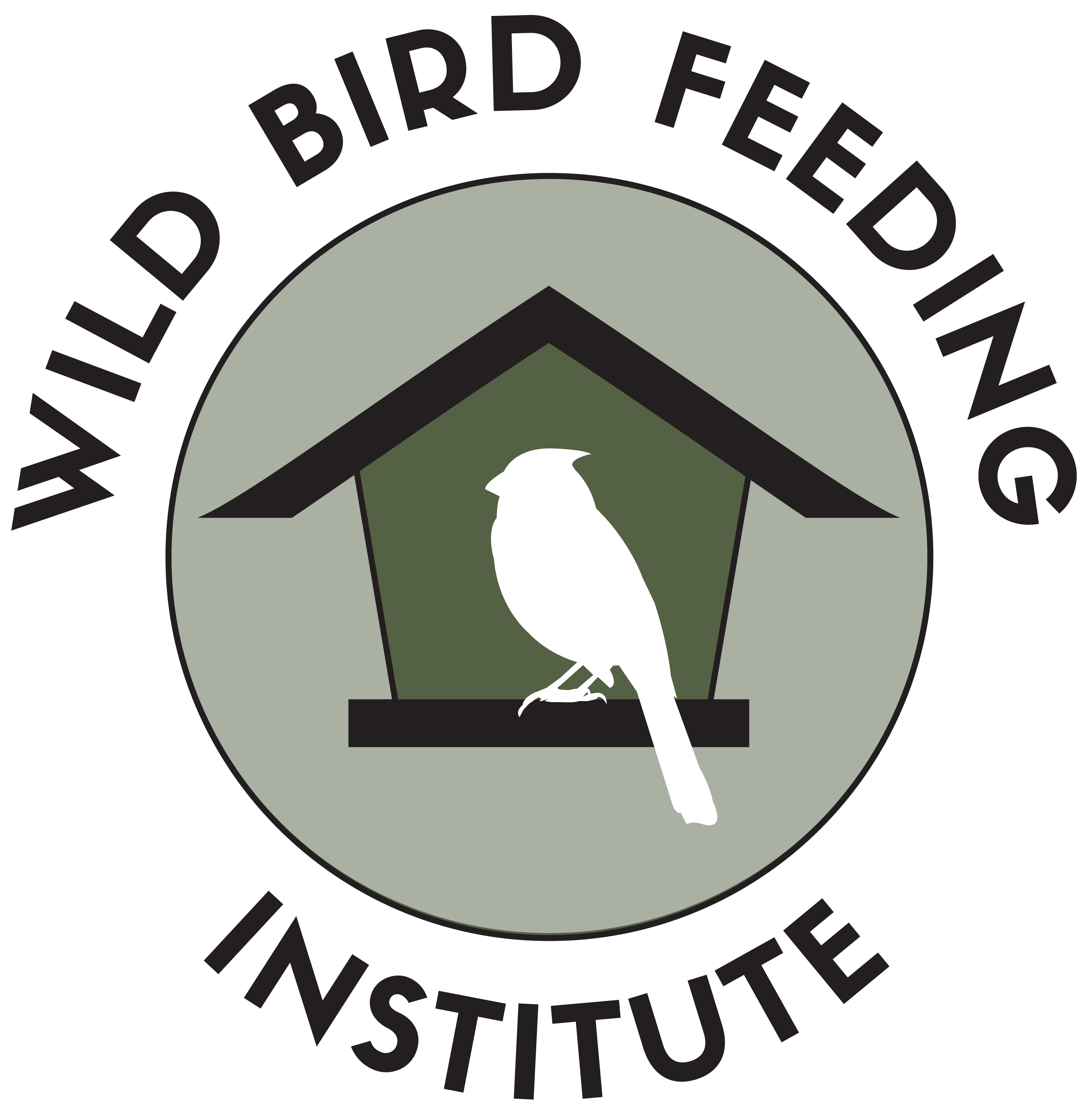How To Stop Birds From Building Nests On Your House
Read the original article on Chirp for Birds.
It’s officially bird nesting season! And while we want to do all we can to help nesting birds, finding a bird nest under your eaves or in other nooks and crannies around your home isn’t ideal. So how do you stop birds from building nests on your house? And if you find a bird’s nest, what do you do? We’ve got the answers from wildlife experts right here!

Why Stop Birds from Building Nests on Your House
Some may find the idea of watching nested birds feed their young a wondrous sight—especially so close to home. But a bird’s nest on your house isn’t always good for your home or the birds. Nests are often messy, as nesting birds often drop sticks and other debris. Feathers, food, feces, and other unwanted messes also accumulate under nests. Nests can also block or clog your ventilation, plumbing, HVAC areas, gutters, and other home systems.
Nesting birds are also quite territorial and defensive, as you can imagine. Picture them swooping your guests as they arrive at your doorstep, unknowingly entering a nesting area on your front porch. And then there’s the danger to the birds themselves: from your pet cat to foot traffic, dangers like these can disrupt a nest, and even prove fatal for baby and fledgling birds. With recent studies revealing a shocking 3 billion bird loss in North America in the last fifty years and 70 US bird species at their tipping point, we must find solutions that protect, and support, our wild birds.
Preventing Birds from Nesting on Your House
There are many wildlife-friendly ways to prevent birds from building nests on your house, including:
- Filling holes around your home. Cavity-nesting birds like Western Bluebirds, Bewick’s Wrens, and Western Screech Owls look for cozy places to build nests. Filling or blocking holes around your home—chimneys, dryer vents, exposed pipes, etc.—with boards, netting, or other barriers will stop them.
- Install bird spikes. Bird spikes are devices with small, needle-like rods that protrude from the base. These rods are dull and won’t harm birds, but will deter birds from perching and building a nest. You can place bird spikes on railings, ledges, under eaves, and anywhere that’s a likely nesting spot.
- Hang wind chimes or scare tape. The movement and sound of wind chimes, especially if they’re made from metal or other shiny materials, will act to deter a bird from a potential nesting spot. Holographic scare tape works in the same way. However, birds are smart, adaptable creatures, and may get used to them, so these aren’t always long-term solutions for deterring nesters.
- Mount a motion-activated strobe light. Flashes of bright light will deter nesting birds from an area. Both the light and shadows created will keep a bird at bay and is an excellent, bird-friendly way to keep them away.
- Give them a place to nest. The best way to deter nesting birds? Give them an alternate nesting spot that’s good for you and them. Bushes, trees, and brush piles in your backyard are all ideal nesting spots. (And if you haven’t gotten to spring cleaning your yard, you may wish to wait until nesting season is over.) You can also hang a bird house or nest box in your outdoor space, preferably a sheltered space away from foot and street traffic and noise, and high enough to be safe from predators.
What to Do if You Find a Bird’s Nest on Your House
- Do your research. Most bird species are protected in the US under the Migratory Bird Treaty Act of 1918, and this includes moving or destroying an active bird’s nest (one with eggs or chicks in it).
- Leave it until nesting season is over. If the nest is in a safe spot and not bothering you or your home, it’s best to wait until the nesting season is over, or you notice signs of inactivity for a week or so, before removing it. As a good steward, you’ve just gifted your local wild birds a safe spot to shelter and raise their young.
- Watch the nest for signs of inactivity. Carefully observe the nest from a safe distance for a few days. If there is no activity (adult birds flying to and fro to incubate their eggs and/or feed and care for their young), the nest has likely been abandoned, and you can then set about removing it. (PLEASE NOTE: some songbird species nest a few times a nesting season, from spring to fall, so if the nest is in a safe spot, it’s best to leave it until the season ends.)
What if you find a baby bird on the ground? Here’s what to do.

How to Safely Remove a Bird’s Nest from Your House
Once you’ve determined that a bird’s nest can be safely and lawfully removed, take these steps:
- Wear protective gloves.
- Without touching the nest, carefully check it for eggs or chicks. If the nest is empty, you can proceed.
- Remove the nest, placing it in your compost pile or in a securely sealed trash receptacle.
- Clean the nesting area with a bleach/water solution.
- If you don’t wish for birds to nest in this spot in the future, block the area or place a wildlife-friendly bird deterrent like bird spikes or netting.
Visit https://chirpforbirds.com/ for more bird-friendly tips!
